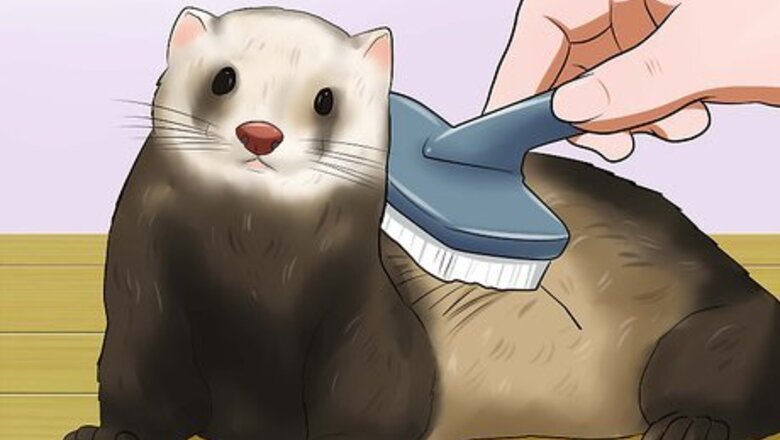
views
X
Research source
Caring for the Ferret’s Fur
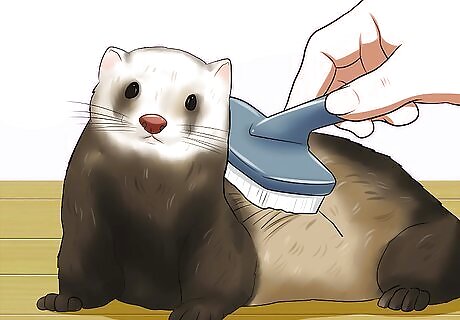
Brush the fur. Use a rubber brush or a grooming brush intended for kittens or cats. Hold the ferret in one hand or have a helper do this. Use quick gentle strokes, and make sure you eventually brush all areas of the ferret’s fur. Ferrets tend to fidget when brushed so you may want to do frequent short sessions instead of longer attempts
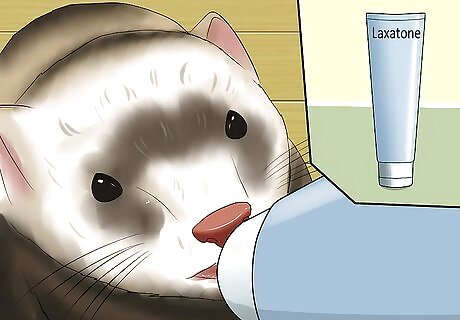
Feed a hairball preventative to your ferret. Laxatone is the usual preventative hairball treatment given to ferrets. Administer laxatone by putting it on the ferret’s nose or paws for them to taste and ingest. These are orally administered medicines to smooth passage of hair in the ferret’s digestive tract. Laxatone works by allowing the hair to slide through the ferret's gastrointestinal tract, and out of the body without a hairball ever forming. Laxatone is available in many pet stores.
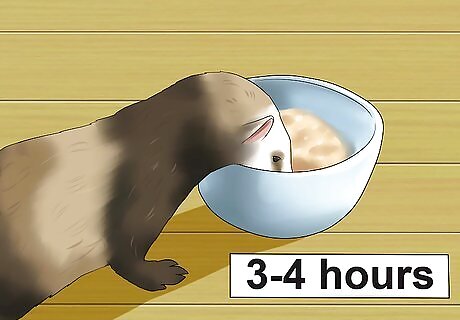
Feed the ferret a proper diet. Feed the ferret every 3-4 hours. A standard ferret diet should maintain good coat and skin health. The ideal ferret diet should be 30-35 percent meat protein, and 15-30 percent fat. Ferret’s need a diet high in protein, high in fat, low in fiber, and low in carbohydrates. Ferrets have a high metabolism so think about leaving some food out all of the time. Whole prey (such as a live mouse) is ideal for a ferret’s diet, but may not be practical for most pet owners. Ferret-specific foods are available in many pet stores. Cat food can sometimes be substituted, but ask your veterinarian.
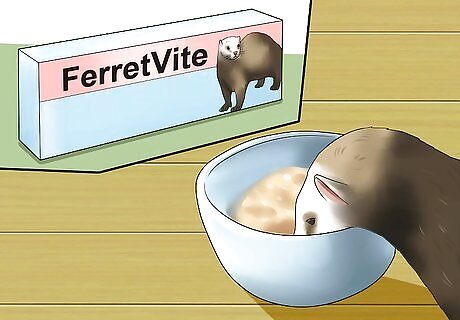
Add taurine. You can either find a ferret food with this already in it or add it in artificially. The taurine comes often in “FerretVite.” FerretVite should be added to the water in liquid form 1 teaspoon daily. FerretVite is a multivitamin that will help with overall nutritional health including coat and skin health. It also comes in the form of an edible paste.
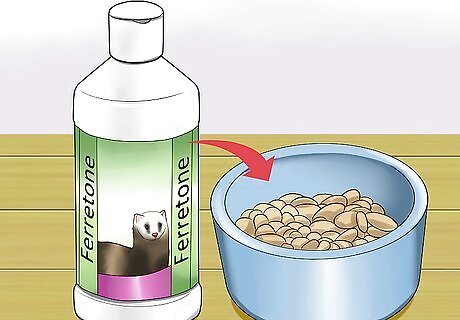
Mix an arachidonic acid supplement into your ferret’s diet. The usual supplement given for ferret’s for arachidonic acid is “FerreTone.” Mix 3/4 teaspoon (3.75 ml) of the supplement into the ferret’s food daily for adults or 1.5 teaspoons (7.5 ml) for kits, pregnant, and nursing ferrets. This is not normally necessary when feeding your ferret a normal diet, but may help with maintaining skin and coat health. Arachidonic acid helps with fur health, neurological health, and skeletal health.
Bathing Your Ferret
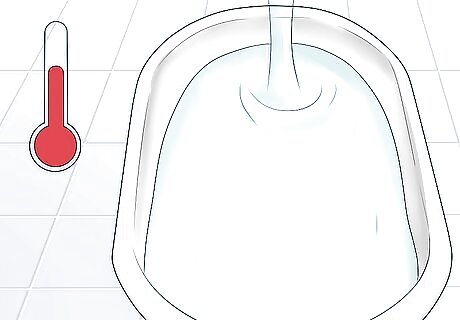
Fill a tub or sink with warm water. Ferrets have a slightly higher normal body temperature than people. Water that is warm to us may be cold to a ferret. Whatever container you use needs to be just full enough of water so the ferret’s head is just above the water when it stands up. A ferret’s normal body temperature is 102 degrees Fahrenheit.
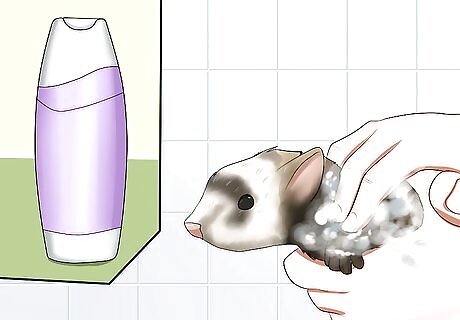
Apply shampoo to your ferret. You’ll need to purchase a shampoo specifically designed for ferrets from a pet store, or ask your veterinarian. Hold the ferret in one hand or have a helper do this. Work the shampoo into the ferret’s fur gently with the warm water into a lather. You may want to use a grooming brush to do this. Use long soft strokes. Avoid the ferret’s eyes, ears, and mouth. These shampoos are set to a special pH (acidity) balance for a ferret’s skin. Kitten or tearless baby shampoos may also work. Consult your veterinarian if you need a special type of shampoo such as for a flea condition.
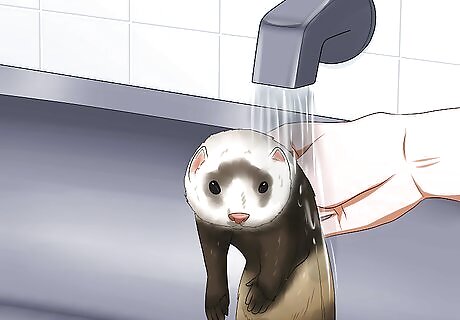
Rinse off your ferret. Use warm water and be thorough. Run the warm water over all areas of the fur. Ensure no shampoo or soap residue remains or you risk drying out the skin.
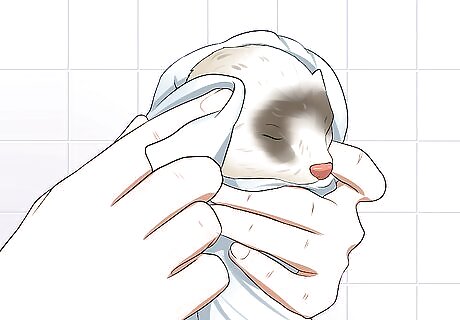
Dry your ferret with a towel. Avoid letting the ferret get chilly or near cold air drafts while damp. Use a towel to pad down the ferret’s fur until it’s only damp. Lay the ferret on one or more bunched up towels to allow the ferret to dry themselves by rolling around. Don’t dry the ferret so roughly that you scrape their skin.
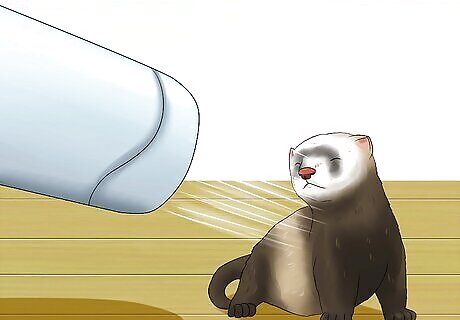
Dry your ferret with a blow dryer. Set the blow dryer to its minimum setting. Hold the blow dryer at least one foot from the ferret. Activate the blow dryer and use it until the ferret is dry. This is an alternative to towel drying your ferret If you are worried about over-drying then you should use the blow dryer just until the ferret is damp and let them burrow into towels to complete the drying process.



















Comments
0 comment